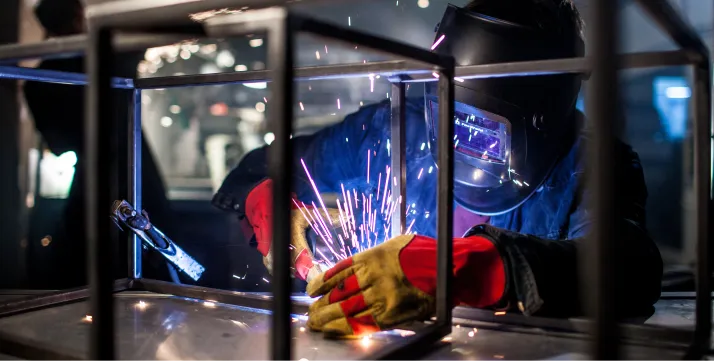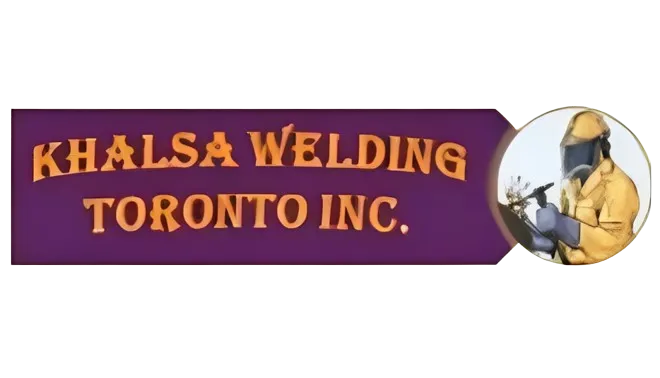
7 Common Types Of Welding Services
Welding is the cornerstone, melding creativity with precision to shape and join metallic structures in metal fabrication. Whether constructing towering skyscrapers, crafting intricate sculptures, or piecing together vital machinery components, welding is pivotal in bringing diverse creations to life. The welding process encompasses techniques tailored to specific applications and materials, giving rise to different welding service types.
From the fiery embrace of arc welding to the precision of laser welding and aluminum welding for industrial projects, get insight into the welder’s toolkit and understand the artistry and technical prowess behind these essential processes.

Common Welding Types And Their Uses
Welding is a multifaceted craft that fuses materials through various techniques tailored to specific applications and materials and has a specific welding service duration.
Here are some common types of welding services and their distinctive uses –
1. Shielded Metal Arc Welding (SMAW)
SMAW, or stick welding, involves using a consumable electrode coated with a flux material. The electric arc between the electrode and the workpiece melts the electrode, creating the weld.
SMAW is versatile and widely used in construction, maintenance, and repair work. It is suitable for welding thick materials and is well-suited for outdoor applications due to its portability and ability to withstand wind and adverse weather conditions.
2. Gas Metal Arc Welding (GMAW)
Also known as MIG welding, GMAW utilizes a continuous wire electrode fed through a welding gun. A shielding gas, often a mix of argon and carbon dioxide, protects the weld from atmospheric contamination.
GMAW is popular in the automotive and general fabrication industries because it produces clean and efficient welds. It is well-suited for welding thin materials and is known for its high deposition rates.
3. Gas Tungsten Arc Welding (GTAW)
GTAW, or TIG welding, uses a non-consumable tungsten electrode and a shielding gas. The tungsten electrode creates an arc, and a separate filler rod may be used to add material to the weld.
GTAW is employed in industries requiring precision and high-quality welds, such as aerospace and nuclear applications. It is suitable for welding exotic metals and materials of varying thickness.
4. Flux Cored Arc Welding (FCAW)
Similar to MIG welding, FCAW uses a tubular flux-filled electrode. The flux generates a shielding gas, making it suitable for outdoor and windy conditions. It can be operated with or without external shielding gas.
FCAW is commonly used in heavy construction, shipbuilding, and structural fabrication. It excels in providing high deposition rates and deep penetration in thick materials.
5. Submerged Arc Welding (SAW)
SAW involves creating a molten weld pool beneath a granular flux layer, protecting the weld from atmospheric contamination. The process is often automated, with the arc hidden beneath the flux layer.
SAW is ideal for welding thick materials, making it common in constructing pressure vessels, pipelines, and structural steel. It is favored for its high deposition rates and efficiency.
6. Laser Beam Welding (LBW)
LBW uses a highly concentrated laser beam to melt and fuse materials. It offers precision and produces minimal heat-affected zones, making it suitable for intricate welds.
LBW is employed in electronics, medical device manufacturing, and aerospace industries. It is chosen for its accuracy and ability to weld small and delicate components.
7. Robotic Welding
Robotic welding involves automated systems, typically robotic arms, to perform welding tasks. The robots are programmed for precision and repeatability.
Robotic welding is widely adopted in high-volume production, such as automotive manufacturing. It enhances efficiency, reduces labor costs, and ensures consistent weld quality in repetitive tasks.
Each welding type brings unique advantages, making them indispensable in various industrial sectors when accompanied by Certified Welders for Quality and Safety. The nuances and applications make these welding techniques essential components of the modern manufacturing landscape.
Welding Where You Want It, When You Need It
Don’t let location hinder your welding aspirations. Mobile welding services by Khalsa Welding Toronto are here to empower you to have welding where you want it and when you need it.
Say goodbye to logistical challenges and hello to on-the-spot metalwork solutions. Call Us today to get top-notch craftsmanship to your location.
RECENT POST
- 6 Key Factors To Consider For Proper Mechanical Piping Insulation
- 5 Types Of Welding Joints You Should Know About
- 7 Common Types Of Welding Services
- How Long Does A Typical Welding Service Take?
- Emergency Welding Repairs: How Mobile Welders Save the Day
- How To Maintain And Extend The Lifespan Of Welded Structures

